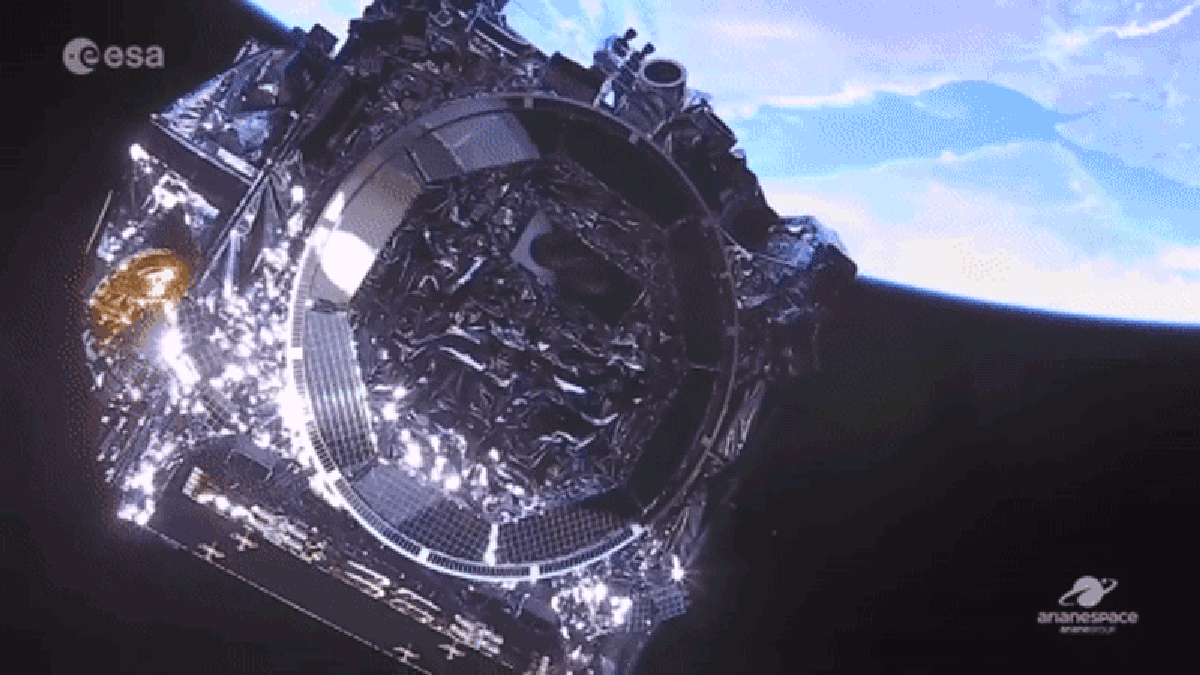On Christmas Eve, it wasn’t just Santa who was preparing to take to the skies for a very important flight. No, engineers at NASA, the Canadian Space Agency and the European Space Agency (ESA) were preparing to launch the $10 billion James Webb Space Telescope into the cosmos.
The Christmas Day launch saw the next-generation space telescope, already carefully folded and loaded into an Ariane 5 rocket, blast off from the ESA’s launch pad near Kourou, French Guiana.
It was one of the most hotly anticipated moments in the telescope’s 33-year journey from initial inception to the moment it will collect its first images of the cosmos.

And shortly after being launched into orbit on-board the Ariane 5 rocket, the JWST was released into the vacuum of space to undertake the majority of its journey alone.
Now, the ESA has released a slightly hypnotic video of the telescope’s first foray into space. And while it marks the craft’s first steps under its own steam, it’s also the last time we’ll see the craft as it undertakes its 10-year mission.
The video shows the moment the multi-billion-dollar space telescope separated from the rocket. It also shows the solar array deploying as the telescope glistens in the sunlight.
These on-board solar panels will help power the space telescope to its destination, a million miles away from Earth.
As Webb sparkles in the sunlight, the footage offers a final majestic glimpse at the craft, which was created to look into the beginnings of the universe.
And, while it’s all a very grand and profound, I can’t help but think about how at home this shot would be in a Chris Nolan film or Portishead music video. Watch it above and let me know if you agree.
But the JWST has come a long way since this video was taken. It’s now approaching its final destination in space and engineers have begun deploying various elements of the craft.
This week, scientists have been on edge as the JWST’s tennis-court-sized sunshields were deployed. The shields have been designed to protect the telescope’s mirrors and cameras from the heat, glare and radiation of the sun and other planets.

Once successfully unfurled, engineers then began deploying the observatory’s secondary mirrors, which will focus light onto its cameras. Next, the space agencies began working to unfold the craft’s enormous primary mirror.
The JWST’s primary mirror comprises three parts, including two wings either side of the main body. Each of the two wings is made up of three mirror segments that must be folded out to create the 6.5 meter mirror.
This step in the JWST’s deployment is expected to be completed today.
After this, all the delicate, complex steps of Webb’s deployment will be complete and it will be all about fine-tuning each element and the craft’s position in space before the telescope can begin its research.
Once ready to begin its mission, the JWST will capture images of far off planets and galaxies, including some that may offer a glimpse at the origins of the universe.





